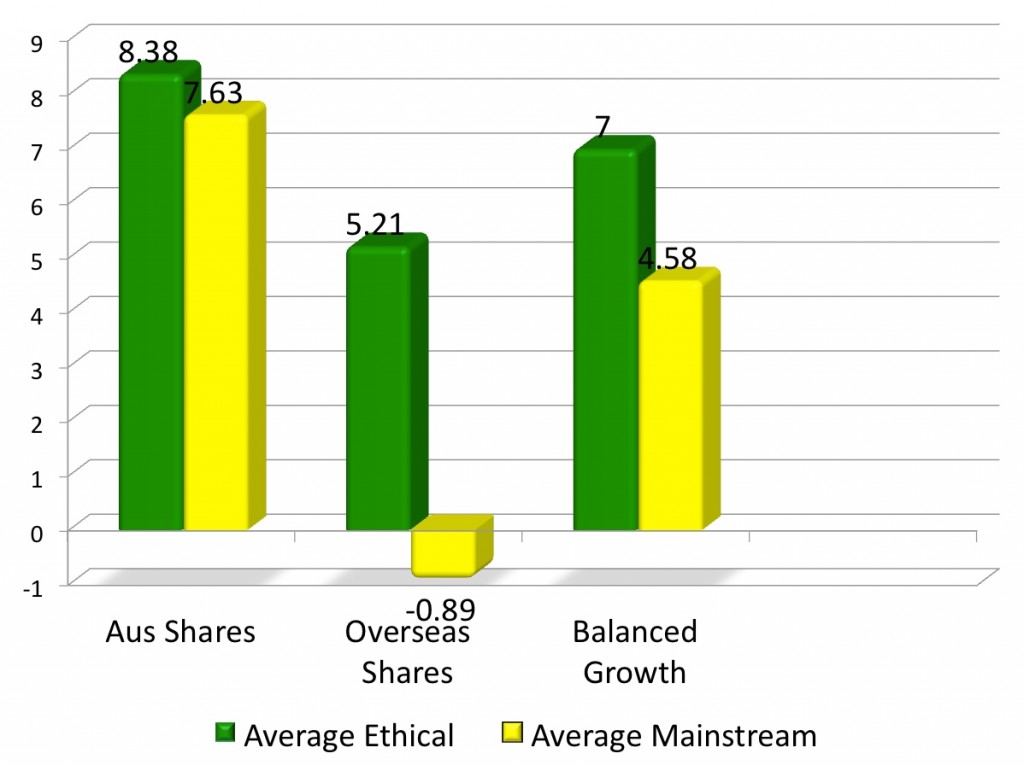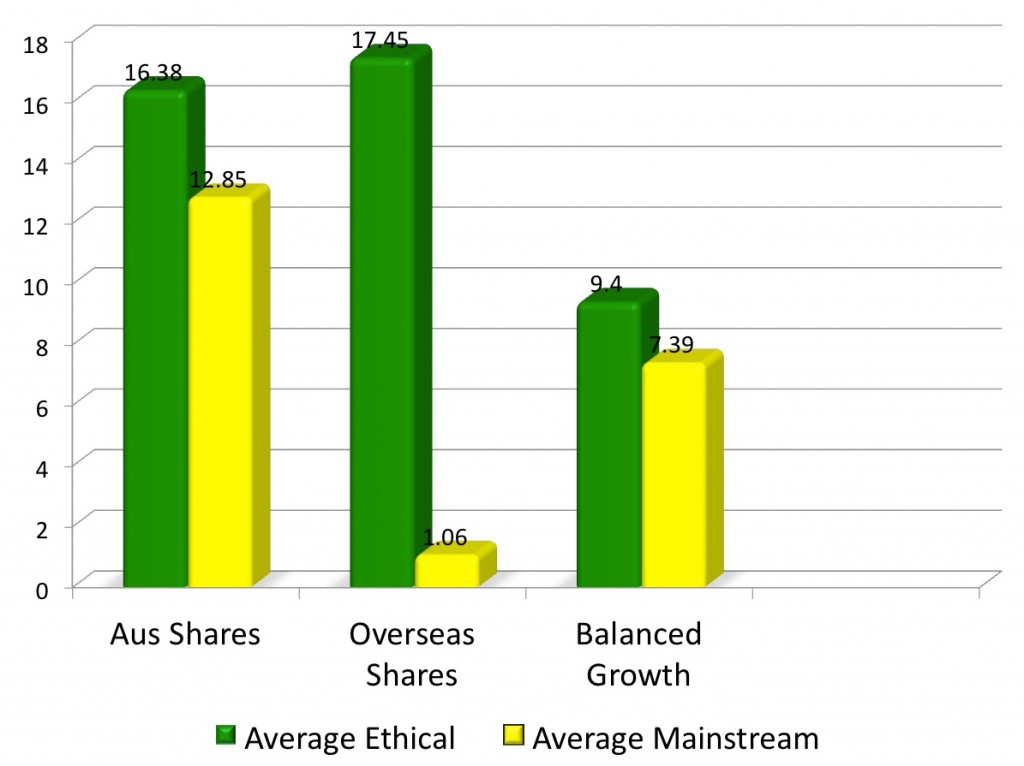Investment 3

Can anybody remember this idol?
No matter where you decide to put your money, successful investing is not about picking the next hot investment. It’s about holding the right assets for your situation and holding them for the correct amount of time. This is not as exciting as picking the next winner but it is a good way to attain financial goals.
Past performance
Past performance is no guarantee of future performance. We know this when we look at different performances around the world. In 2008, Wes Carr was our idol. Our IDOL Australia! We idolised him so much that he felt the show ruined his name, so he no longer performs under it and is now performs under the name Buffalo Tales.

In June 2005 the world champion Australian one day cricket team played Bangladesh. The Asian team of no names were placed by one bookie at 500 to 1 to beat the Aussies because past performance had us winning in a pushover.
The world’s best location – the MCG Boxing Day test.
We lost. But that didn’t mean that Bangladesh would win their next game against Australia. The Aussies won by 10 wickets in just 19 overs (if you’re not a cricket fan, get a life, because that’s about as big a flogging as you’re ever likely to see).
This rule of past performance being no guarantee of future performance works in investing as well.
Calendar Year Returns for Major Asset Classes 1992 – 1996
| Year | Cash | Aussie Bonds | Property Trusts | Aussie Shares | Overseas Shares |
|---|---|---|---|---|---|
| 1992 | 6.92 | 10.41 | 3.21 | -2.31 | 5.29 |
| 1993 | 5.39 | 16.32 | 30.73 | 45.36 | 24.98 |
| 1994 | 5.36 | – 4.66 | – 7.09 | – 8.67 | – 7.60 |
| 1995 | 8.03 | 18.63 | 14.28 | 20.19 | 26.50 |
| 1996 | 7.57 | 11.87 | 14.24 | 14.60 | 6.76 |
Source: Morningstar
Looking at the table of major asset class returns from 1992 to 1996 we see that the highest returns for the year, in red, changes from one class to another the next year. If you were chasing the past performance of last year’s winner you would’ve done pretty poorly. So if you put all your money in Aussie bonds in 1993 your return would’ve been 16.32%, almost 30% less than the Aussie sharemarket performance for that year. Then in ’94 you say “Bugger this, I’m putting all my money in the Australian sharemarket” and then you are outdone by the cash assets by 14%. So forget about chasing last year’s winner.
However, we can see trends emerge over time. Taking annual returns over the 24 year period from 1980 to 2003, cash performed the highest once, Australian bonds three times, property trusts four times, Australian shares eight times and international shares eight times as well.
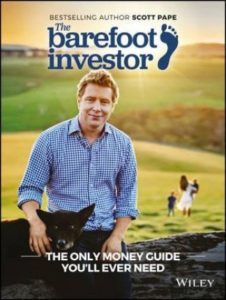 FURTHER READING: The Barefoot Investor by Scott Pape: The best book on money around and it’s written in a language people in gens X and Y can relate to. If this is the only book you ever read, well, good (unless you have kids, as he has a cracking book for families too – see the Kids and Money topic).
FURTHER READING: The Barefoot Investor by Scott Pape: The best book on money around and it’s written in a language people in gens X and Y can relate to. If this is the only book you ever read, well, good (unless you have kids, as he has a cracking book for families too – see the Kids and Money topic).
I hope he is wearing brown undies. Photo: The Australian.
Volatility and diversification
There are two terms I’ve used thus far which need to be clarified: volatility and diversification. Volatility is generally only seen in growth assets of property and shares and it’s when an asset’s price rises and falls. This usually happens in the short term – which can be anything from a couple of hours to a year or two. The best example is with shares where a share’s value can go up or down by as much as 20% or more in a day. The same share may rise or fall by 90% or more over a year. This kind of rise and fall can also happen with property, but generally property doesn’t move up or down as quickly as shares do. Over the longer term there will be a trend that will smooth out the short term volatility bumps, and hopefully this trend will show an upwards rise. The best way to avoid extreme volatility is through diversification.

Diversification is the spreading of money, and risk, across different assets and asset classes. Unless you can afford to lose all your money, spread your risk by spreading your money. In other words, don’t put all your eggs in one basket.
A person who has $1,200,000 invested in one investment property, in one street, in one city, in one country is exposing themselves to many risks. If there is a new and noisy road built over the back fence or the neighbour builds a second story and completely blocks the view, the $1,200,000 value can drop to $1,000,000 almost overnight. If they had instead bought three single bedroom units for $400,000 each, in three different locations, they have spread their risk across three properties in three different areas. But they are still exposed to the risk of the property market as a whole dropping. Diversifying their money across the asset classes of shares, property and cash would see them experience much lower overall volatility. As one asset falls in value another is rising to counteract the fall.
Looking at shares as an example, if you had money spread across 15 to 20 companies and one failed, you would be unlucky to lose money over the long term as the other companies’ shares are likely to rise in value enough to counter the single failure. You would be even further protected by loss if you had some of your funds in the property market as well as cash and fixed interest. With such a good spread, your share holding in that unsuccessful business should not worry you.
So, you may now decide to invest wisely and spread your money across the three asset classes, putting your money into managed funds so you don’t have to make all the investment decisions yourself. What sort of companies are you now receiving a cut of the profits from? Do you care?

Ethical investment
If you are the sort of person who supports recycling and renewable energies, and you’re opposed to the manufacture of arms and exploitation of child labour, or even if you just recycle, then you might be interested in ethical investment. It can also be known as sustainable responsible investment or SRI.
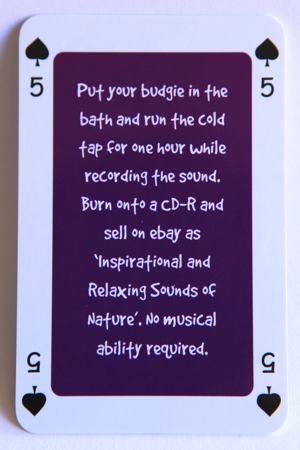
Over the last couple of years as the general public has become more aware of issues which have a negative impact on the environment and society in general, ethical investment has grown a great deal. There are now so many managed funds claiming to be ethical in nature that it is hard to distinguish the sheep from the goats.
Some managed funds (the so-called light green ones) invest in shares of companies they deem to be the most ethical in their class. So they have money in the most ethical tobacco company, nuclear mining company, native forest wood chipping company, etc. Then you have fund managers who completely avoid these types of companies and invest in stocks like banking, media and household goods. I guess you could call these funds lime green – not too light not too dark. Then there are the deep green funds. These are the ones that not only avoid all the companies they perceive as doing harm to the environment and society, but they actively seek companies that make a positive impact in these areas.
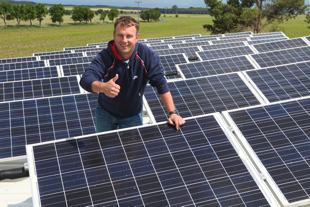
Claudia’s brother, Marko has a roof of solar panels providing about 10% income each year (the German government has pretty good feed in tariffs for renewables).
So deep green fund managers will invest in areas of healthcare and education and companies that are working to reverse global warming.
The deepest green fund managers I have come across in Australia are Australian Ethical Investments and Pengana. *Disclosure* Claudia and I have money invested with Australian Ethical.
But if you’re an average investor, all you really care about is the bottom line – how good the return is. Ethical investments are picked by researchers not only for their environmental and social scores but most importantly for their financial prospects. It may surprise you to know that the percentage returns of many ethical investments are on a par with their non-ethical counterparts. Some ethical companies and funds don’t perform as well, but…
Average Ethical Vs Average Mainstream Funds 7 Year Returns to 2011
by Anne-Marie Spagnolo
…as you can see from the bar chart on the right at the top, the average ethical fund performs better. This chart shows the seven year returns of average ethical and average mainstream funds to June 2011. As you can see, across the three categories of Australian shares, international shares and balanced growth funds mainstream investments have been outdone by their ethical counterparts. Even with the difference between ethical and mainstream funds being only 0.75%, when that is compounded over seven years it starts to make a big difference.
Yes, past performance is not a guarantee of future performance, but, the longer the time period of historical data you are looking at, the more indicative that data becomes for the future. After all, Australia has only lost once in a 50/50 match and one test match to the Bangladesh cricket team (but, being a big cricket fan you already knew that, right?)
Average Ethical Vs Average Mainstream Funds 7 Year Returns to 2005
Just in case you needed more convincing, the bar chart on the bottom shows the same information as the previous chart but with a seven year return to September 2005. Combined, these two sets of data show just how well ethical investments have performed over a long time period relative to their mainstream competitors, particularly in international shares. The source for both these charts is taken from the Responsible Investment Association Australasia.
Ethical investment is an area of investing I have been keeping an eye on for a long time. As Claudia and I have invested our own money in deep green funds it is something we believe in strongly enough to put our money where our mouths are. I figure it makes sense from a financial point of view to invest in companies that are more likely to have a greater demand in the future and steer clear of the companies that will suffer a decline in their customer base. Year after year I see comparative returns, like those in the two bar graphs, that show that ethical investment is indeed where the future of investment is increasingly heading. In fact it is rare to see long term returns where ethical funds do not outperform.
Ethical investing can give you the triple benefits of good returns, personal satisfaction and the ability to influence change. Kind of like getting an extra vote in between elections, and getting paid to do it.
Ethical funds are not just share funds but may be cash, or property, or a balance of all three of these (like the balanced growth funds in the charts). For a link to financial planners who specialise or have a specific interest in ethical investment see the Financial Planners topic.
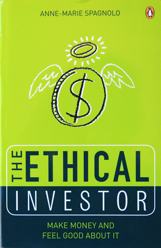 FURTHER READING: The Ethical Investor by Anne-Marie Spagnolo: A simple, short guide to investing in a way that may reflect your values.
FURTHER READING: The Ethical Investor by Anne-Marie Spagnolo: A simple, short guide to investing in a way that may reflect your values.Knowing where your money is invested should be something that anyone with superannuation considers. Sure, not everyone will invest in direct shares or managed funds, but the vast majority of working Australians will have money invested in super. If you have no idea which companies your retirement income is currently supporting, it’s probably time you found out. If you couldn’t be arsed doing the research and wanted to pick a green super fund then you could roll your money into one that’s marketed as ethical or sustainable. Unfortunately it’s not a guarantee that you will avoid things like coal mining as there is a fair amount of greenwashing in the industry (effectively saying that your product is environmentally conscious when it’s not). Legislation has a way to go to catch up to consumers’ expectations in this area.

Investment outside of the mainstream asset classes of cash and fixed interest, property and shares include items such as art, gold, wine, stamps, banknotes (like the old Australian $1 note), antiques and collectables. Sure, these things may have good growth in some years but there will be no income flowing from them, unless you can hire them out somehow. In fact many of these things cost money to hold onto (think of wine fridges, humidity controlled environments for artwork and safe storage for gold bullion). Their only investment worth is in a possible increase in value. Scott Pape, author of The Barefoot Investor, calls this the ‘idiot factor’. You have to find some idiot who is willing to pay more for the item than you did. A bigger idiot than yourself. If you really know a lot about your hobby of stamp collecting or antiques or whatever, good luck and I hope you enjoy it, otherwise leave the investment side of these things to the experts.

This seems like an appropriate place to paraphrase former PM Scomo and ask the question “How good is crypto?!!”
Yeah, not very. Investing in cryptocurrencies is similar to investing in products like those described in the paragraph above – there is no income that flows from them. The difference between crypto and rare postage stamps is that cryptocurrencies are extremely volatile. Some time in the future that may settle down but they will always be something you need to sell for more than you bought for, otherwise you’ve done your dough.
Some important things to ask yourself before you make an investment choice are; Is the recommended investment timeframe suitable for the time you need to be investing for? Does the level of risk involved match the level of risk you are willing and able to take? Do you have enough money to invest in the asset class, or will you have to borrow money and increase your risk? How much ongoing involvement do you want? How will the investment affect your tax?
If your answers to these questions are vague or you can’t answer them, there is a good chance your chosen investments will be unsuitable for your situation. You will need to find answers through your own research or, better still, use the services of an independent financial planner. The less you understand about where your money will be invested, the greater the chance it will be unsuitable for you.
And never forget about the volatility in the growth assets of property and shares, and the need to diversify to lower the risk, and hold them for the long term. Lastly, the big one – the greater the expected return, the greater the risk of you losing your money.
Investment Questions
1) Put the following investments in the order from lowest to highest risk (drag and drop ’til they go green):
- Ordinary BHP shares;
- A 3 bedroom house in an established Brisbane suburb;
- A gold futures contract.
- An Online savings account with ANZ;
- A debenture with Esanda;
2) You come across an advertisement on the website of a reputable newspaper for a system of buying and selling shares involving a way to make money in both rising and falling markets. There is a free seminar about the system in your area to give more information and the ad says the training provided will take around a week to do then a few months to master, assuming you put in 3-4 hours a week on the internet at home. There are many positive testimonials with people sharing stories of their success with the system, to which they provide contact phone numbers. You should:
- Sign up knowing you will make many times more than the cost in just a few weeks;
- Ring the people who gave testimonials before making a decision;
- Ignore the advertisement;
- Go along to the free seminar, but leave your chequebook at home;
- Quit your job.
3) You want to sell your home but don’t know how much it is worth. The financially smartest thing to do is:
- Ask as many neighbours as you can what they estimate the market in your area is worth.
- Pay $500 for a professional, independent valuation.
- Get free valuations from real estate agents in the area and sign up with the one who gives the highest.
- Pay $75 for an online property report.
- Get a free online property report.
- Righto, that’s a hard question because we haven’t really covered this, but it is a situation you will probably come across once or twice in you life. As your home is a big asset (and one to which you would have an emotional attachment) it is very important to get the sale of it right. Professional property valuers are experts in knowing what a property will probably sell for. They do not receive more money for giving a higher valuation and are independent of the sale. Real estate agents are likely to give you an inflated price to encourage you to sign up with them (then tell you as soon as you sign that your place will probably not get as high a price as they initially said it would). Neighbours can have a good idea what the market is worth but, unless they value properties for a living, won’t be experts. Online valuations don’t take into account many things like whether or not your home has a roof. To get an accurate valuation you need someone to set foot inside and if it costs $500 then it is well worth it for the knowledge and independence.
4) What is the Capital of Greece? About $3.50.
Back to our goal

Don’t forget to pack Ted for Queensland.
We were investing to get the money for a holiday and we want to go to Queensland in 12 months time. We actually want to go now, but we will be able to pay for it outright in 12 months time. We know that the only mainstream short term investments are in cash and fixed interest, so we should probably look at something like a term deposit or online savings account to put the money in. If the holiday was an around the world trip including all seven continents in seven years time, then we could consider growth assets.
Compound interest
Looking ahead seven years, how do you work out a future amount of money when you know the time frame it will be invested for and an expected percentage return? The compound interest formula. Contrary to what many crap investment books say, there is no secret to successful investing, just this formula. This magic formula takes into account the snowball effect of compounding – interest earned on the amount you have invested as well as on the accumulated interest.
Understanding this formula is probably the best way of achieving your financial goals. When you understand that compound interest is used by the banks and other lenders to get as much money from you as they can, you can counteract them by paying as much off your loans as possible, as often as you can. We looked at that in the Debt Elimination topic. Now we find the same concept is used to our advantage if we save on a regular basis and keep any earnings on the savings in that investment.
FV = PV (1+ i)n
FV is the future value of the invested sum, PV is the present value, i is the expected return expressed as a decimal, and n is the number of years.
Time for a maths lesson. You have $10,000 invested in a share fund and expect a return of 11.5% over 8 years. How much will it be worth in 8 years?
FV = $10,000 (1 + 0.115)8
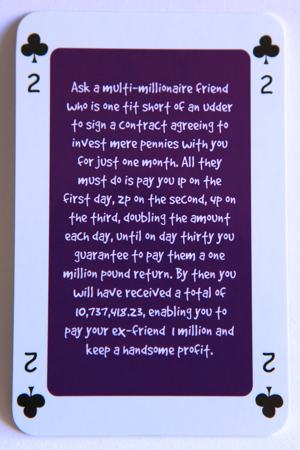
11.5% expressed as a decimal is 0.115 (if you don’t do this bit as a decimal the rest doesn’t work). As always, calculate the figures in the brackets first.
FV = $10,000 (1.115)8
All scientific calculators (used in high school) will have a ‘power’ or xy key. Basic calculators don’t. To turn your phone’s basic calculator into one with a xy key you may need to turn the phone horizontally.
FV = $10,000 x 2.388905
FV = $23,889
Shit. I couldn’t have made that harder to follow if I tried, so if you want a faster and easier way of calculating compound interest, visit the MoneySmart website
Noel Whittaker, author of Making Money Made Simple, uses a great example of compound interest where he talks about the investing experiences of two people of the same age. The first, a 19 year woman, puts away $2,000 a year every year for 7 years into a growth investment returning 10% p.a.. The total invested is $14,000 and she doesn’t ever put any more money into it. The second person waits until he is 26 to start and invests $2,000 a year into the same investment for 40 years for a total of $80,000 that he’s put away. At their 66th birthdays the woman has accumulated $945,000 while the guy ends up with $894,000. The sooner you start, the more powerful the compounding.
If you play around with different numbers with the compound interest formula (as all you maths nerds like to do) you notice a pattern. The longer the investment is held for and the greater the expected return, the larger the future value grows to, especially in the later years. However, this formula does not take into account the effect of taxation, which we look at next.
Investment 3 Resources
-
- Australian Ethical Investments
- Pengana
- MoneySmart’s compound interest calculator
- The Barefoot Investor by Scott Pape
- The Ethical Investor by Anne-Marie Spagnolo

